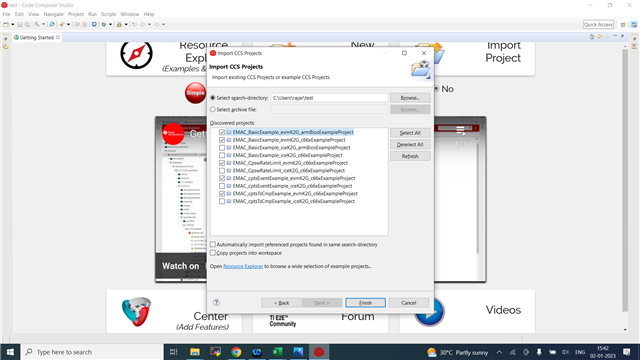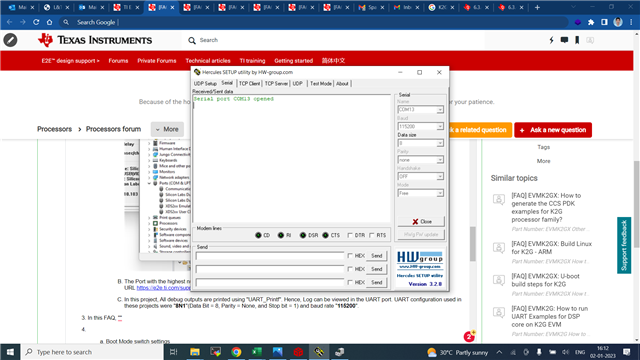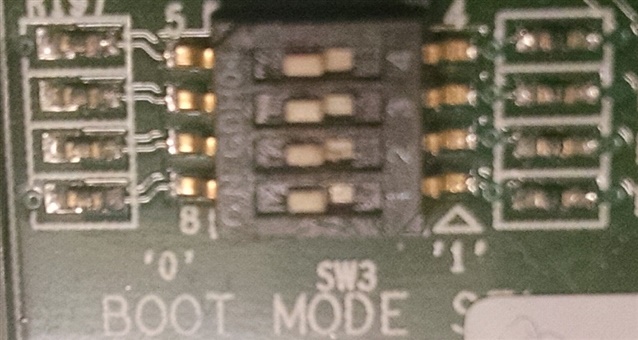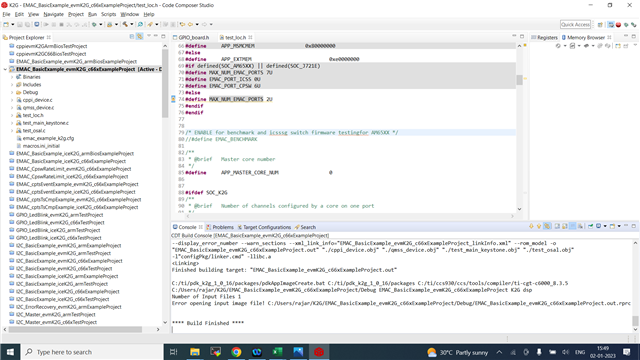Other Parts Discussed in Thread: 66AK2G01, K2GICE, 66AK2G02, , 66AK2G12
How to build, run and test the EMAC example from TI-RTOS PDK for the K2G family processors (EVMK2G, EVMK2GX, EVMK2GX, 66AK2G01, 66AK2G02, 66AK2G12 and K2GICE) on its DSP core?
This thread has been locked.
If you have a related question, please click the "Ask a related question" button in the top right corner. The newly created question will be automatically linked to this question.
Greetings, To Build, Run and Test the EMAC example for K2G devices make sure the prerequisites are done without any errors.
Install CCS (https://www.ti.com/tool/download/CCSTUDIO/9.3.0.00012),
TI RTOS SDK
For K2G: Install PROCESSOR-SDK-RTOS-K2G (Version: 06_03_00_106, https://software-dl.ti.com/processor-sdk-linux/esd/K2G/latest/index_FDS.html ),
After installing TI-RTOS SDK and CCS, we need to generate the Example projects for PDK(Processor Development Kit, folder present inside the "C:\ti", where all the driver APIS, Documentation, and Example code are present.),
Now, Import the CCS project into CCS and go on
To Import the project, Go to File -> Import -> "CCS projects" in "C/C++" -> Browse "Select Search-directory". make sure to uncheck the "Copy Projects into Workspace" (This is to avoid compilation errors only If TI-RTOS SDK was installed in a different location than "C:\ti\").

we have the following DSP example projects
EMAC_BasicExample_evmK2G_c66xExampleProject
EMAC_BasicExample_iceK2G_c66xExampleProject
EMAC_CpswRateLimit_evmK2G_c66xExampleProject
EMAC_CpswRateLimit_iceK2G_c66xExampleProject
EMAC_cptsEventExample_evmK2G_c66xExampleProject
EMAC_cptsTsCmpExample_iceK2G_c66xExampleProject (Note: ICE - Industrial Communications Engine, is an extended module with bulk features added compared to evmK2G).
Do not open ARM and DSP examples at the same time, CCS will throw the "Project out-of-sync" error dialog.
Hardware connections,
Ethernet port connected from Router or Switch.
We can connect through Mini USB connecting through J1 (Another mini USB port (J3) used by Onboard Debug Emulator).
There will be two mini USB ports available for UART in the "Device Manager" section in "Windows OS" (CP2105 chipset, refer to device manager image for reference)
The Port with the lowest number is the UART port.
The Port with the highest number is BMC port. To create a Target configuration for "EVMK2G", kindly refer to this URL https://e2e.ti.com/support/processors-group/processors/f/791/t/1135633
In this project, All debug outputs are printed using "UART_Printf". Hence, Log can be viewed in the UART port. UART configuration used in these projects were "8N1"(Data Bit = 8, Parity = None, and Stop bit = 1) and baud rate "115200".
In this FAQ, "EMAC_BasicExample_evmK2G_c66xExampleProject" is built and run. This example deals with EMAC physical layer to send and receive packets.
EVMK2G hardware settings,
Boot Mode switch settings
| SW3[4:1] | BOOT MODE |
|---|---|
| 0000 (0x0) | Sleep/No Boot |
| 0001 (0x1) | PCIe boot |
| 0010 (0x2) | Ethernet Boot |
| 0011 (0x3) |
I2C PLL Boot |
| 0100 (0x4) | SPI No PLL Boot |
| 0101 (0x5) | SPI PLL-1 Boot |
| 0110 (0x6) | USB Boot |
| 0111 (0x7) | MMC/SD Boot |
| 1000 (0x8) | UART Boot |
| 1001 (0x9) | QSPI 96 Boot |
| 1010 (0xa) | eMMC Boot |
| 1011 (0xb) | NAND Boot |
| 1100 (0xc) | I2C No PLL Boot |
| 1101 (0xd) | SPI PLL-2 Boot |
| 1110 (0xe) | SPI PLL-3 Boot |
| 1111 (0xf) |
QSPI 48 Boot |
No Boot Mode switch settings : 
More details on the hardware setup can be found in https://software-dl.ti.com/processor-sdk-linux/esd/docs/06_03_00_106/linux/How_to_Guides/Hardware_Setup_with_CCS/66AK2G02_GP_EVM_Hardware_Setup.html
To Build the project, Select the project and then give "Rebuild project". It will build without errors, once the code is not modified.

In the EMAC project, The example has 4 major functions
app_test_task_emac_init - Initialises the driver.
app_test_task_poll_link - Check for the link status.
app_test_task_send_pkts - Sends the packets to a particular port.
app_test_task_poll_pkt - Receives the packet on a particular port. These functions are created as tasks and called in the"main()" function.
Thanks & Regards,
Rajarajan U